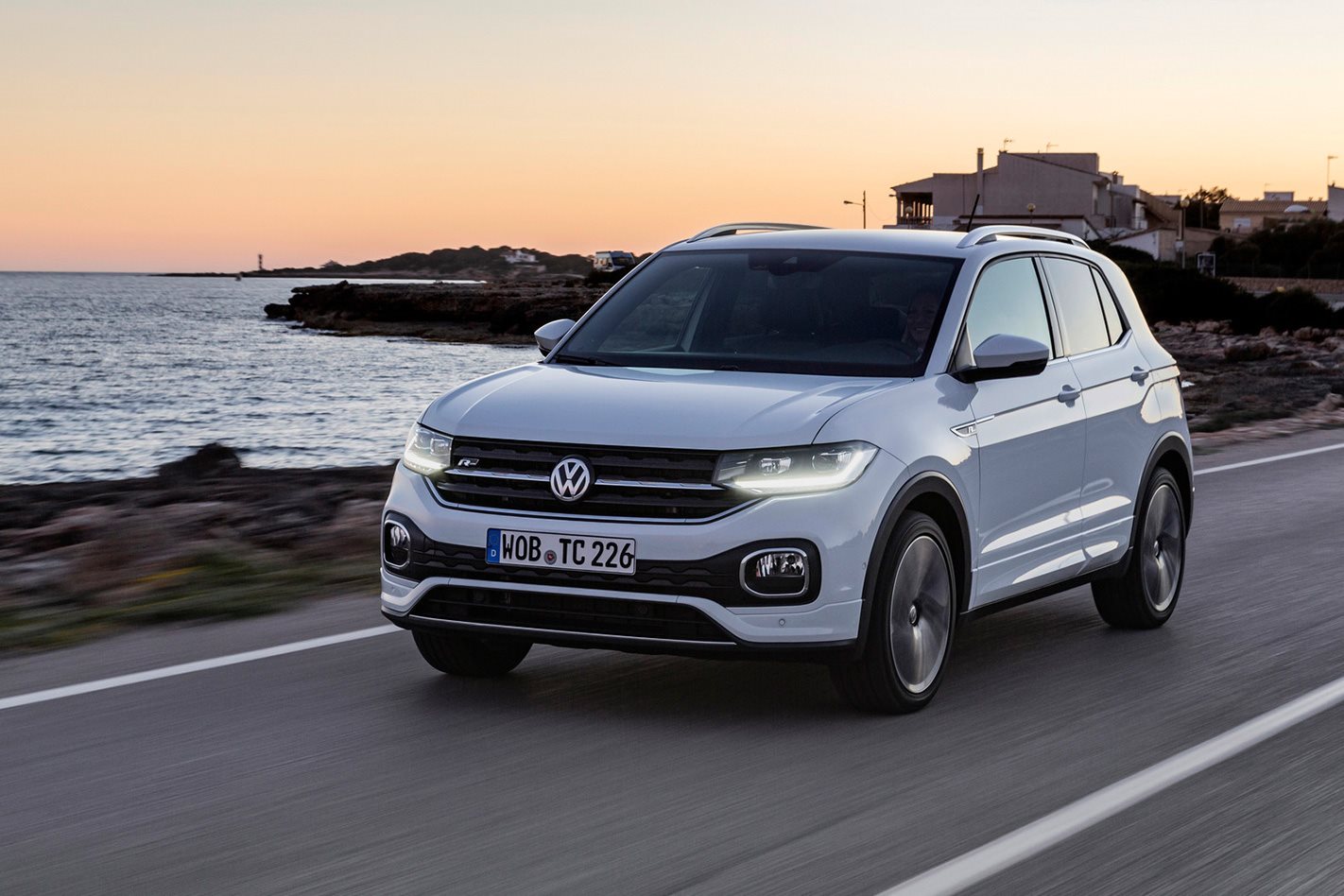
What is the Volkswagen T-Cross?
Volkswagen may be a little late to the small SUV – or ‘crossover’ – party, but it’s bringing two exciting new babies to Australia in a bid to steal attention from the likes of the Mazda CX-3, Toyota CH-R and Mitsubishi ASX.

The more stylish Volkswagen T-Roc is the emotional half of that equation, but in this review we’re looking at the more pragmatic, and therefore more compelling, Volkswagen T-Cross.
To call the Volkswagen T-Cross an SUV is not strictly correct. Conceptually, it’s a crossover bridging the gap between conventional hatchbacks like the VW Polo and Golf and mid-size SUVs like the VW Tiguan. So it’s best to think of the five-door, five-seat T-Cross as a VW Golf on stilts with more interior space.
Volkswagen tells us the T-Cross will start “under $30,000” when it arrives in Australia in March or April 2020. It’ll need to be closer to $26,000 – or a touch more than a Mazda CX-3 Maxx Sport in FWD guise – to be truly competitive in this hotly contested space, or carry a lot more features and equipment.
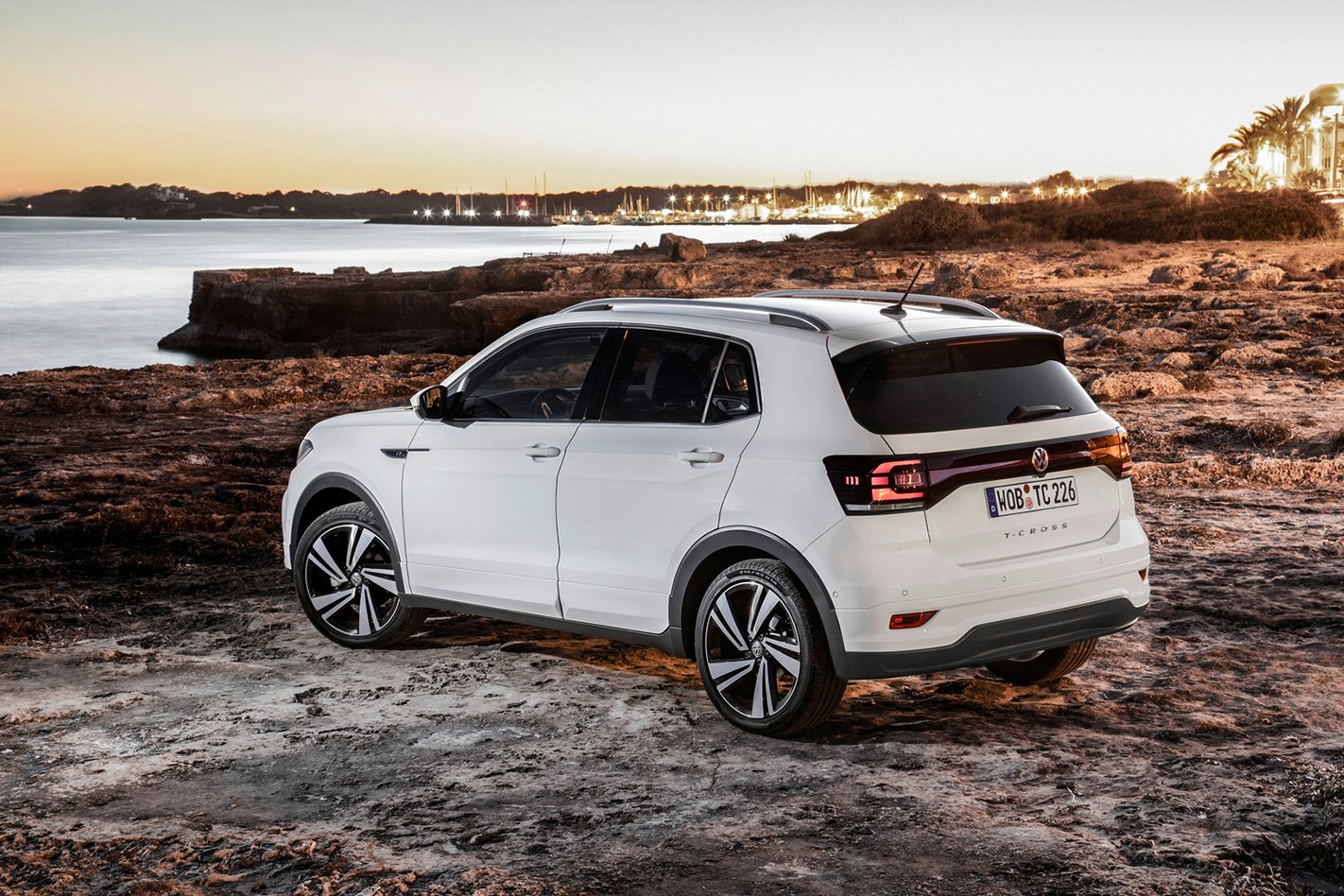
Two models will be offered, at least initially, both powered by the 1.0-litre turbocharged petrol engine we test drove in Germany in September 2019. Each variant will feature a seven-speed DSG automatic transmission and be front-wheel drive only.
What’s the VW T-Cross like to drive
It won’t come as a surprise to anyone who’s driven a late-model Volkswagen that the VW T-Cross quickly makes you feel at home inside, and is easy to drive. The engine and transmission work together smoothly – mostly, although the DSG can be a little jerky when engaging from standstill, and at low parking speeds. The steering wheel and pedals are light and linear, which makes the T-Cross easy to manoeuvre, and agile around town.
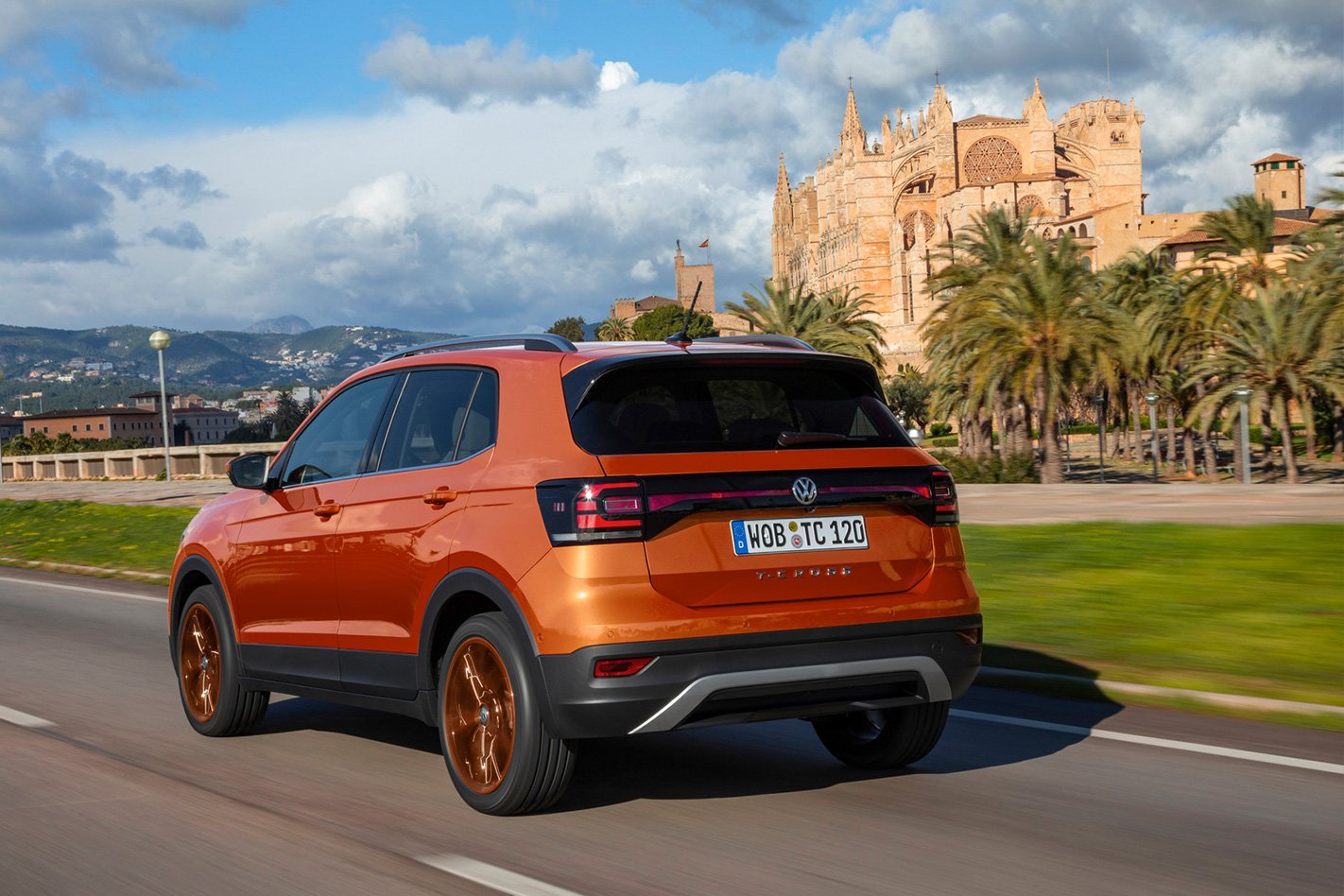
The VW T-Cross is equally composed and comfortable on Germany autobahns at speeds well beyond anything legal in Australia.
The T-Cross rides rougher roads without much complaint, and the cabin is quiet and refined, with very little engine or road noise hampering occupant conversations.
The engine is small, its 1.0-litre, three-cylinder turbocharged petrol configuration producing 85kW and 200Nm, which VW says hurries the little crossover from rest to 100km/h in around 10.2 seconds. That’s nobody’s idea of fast, but neither does it feel slow or lacking in real-world situations.
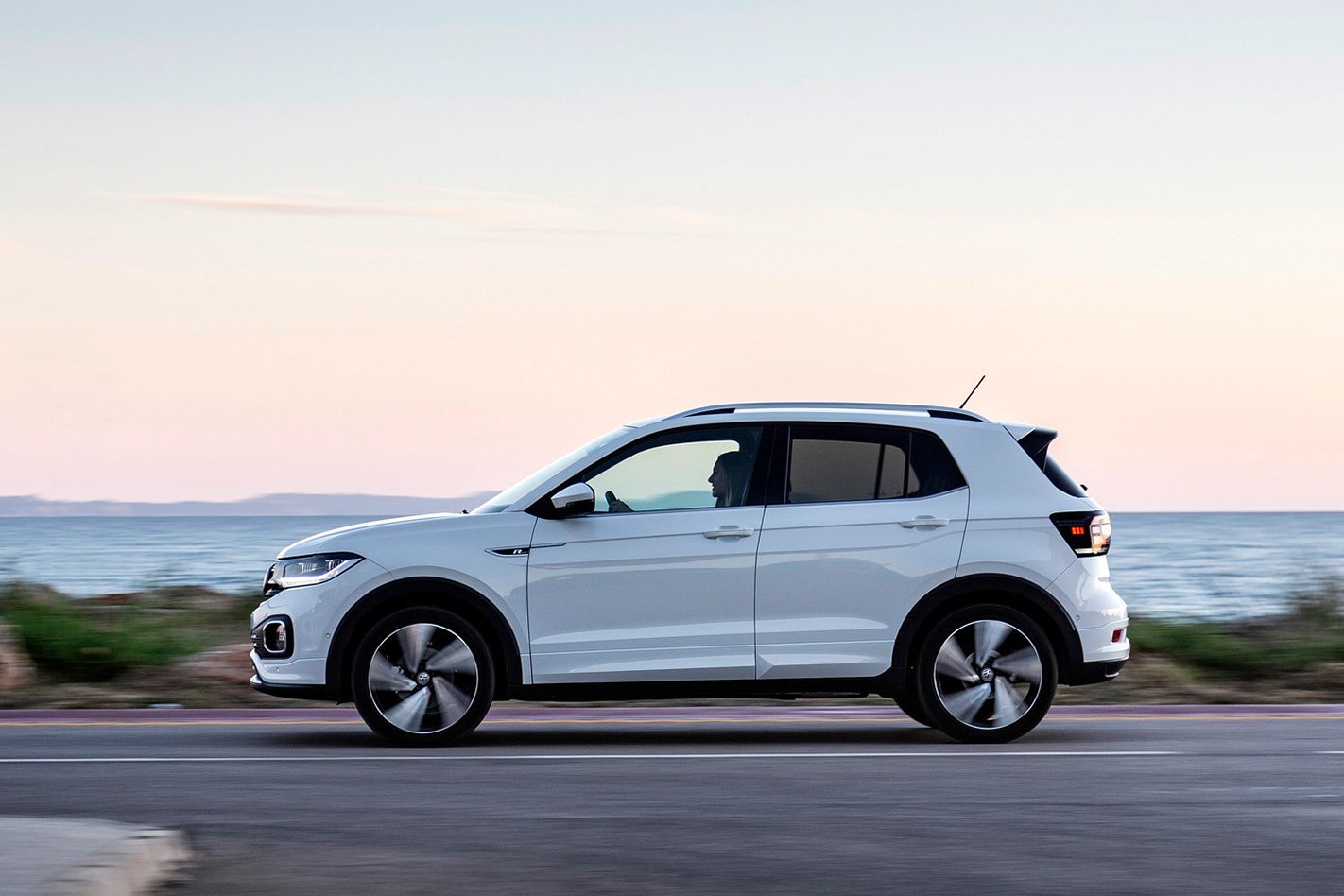
The T-Cross’s biggest driving advantage over the mechanically similar VW Polo is the driving position which is 100mm higher and therefore affords more visibility of the world outside the windows.
What’s the VW T-Cross like to live with?
Again, for anybody who has driven a new VW Polo or VW Golf hatchback in recent years, the VW T-Cross’s interior is extremely familiar.
The dashboard is practically identical to the Polo, which means there is a large infotainment display sitting above two air vents and air conditioning controls. In typical Volkswagen style all the controls are logically placed and easy to use.
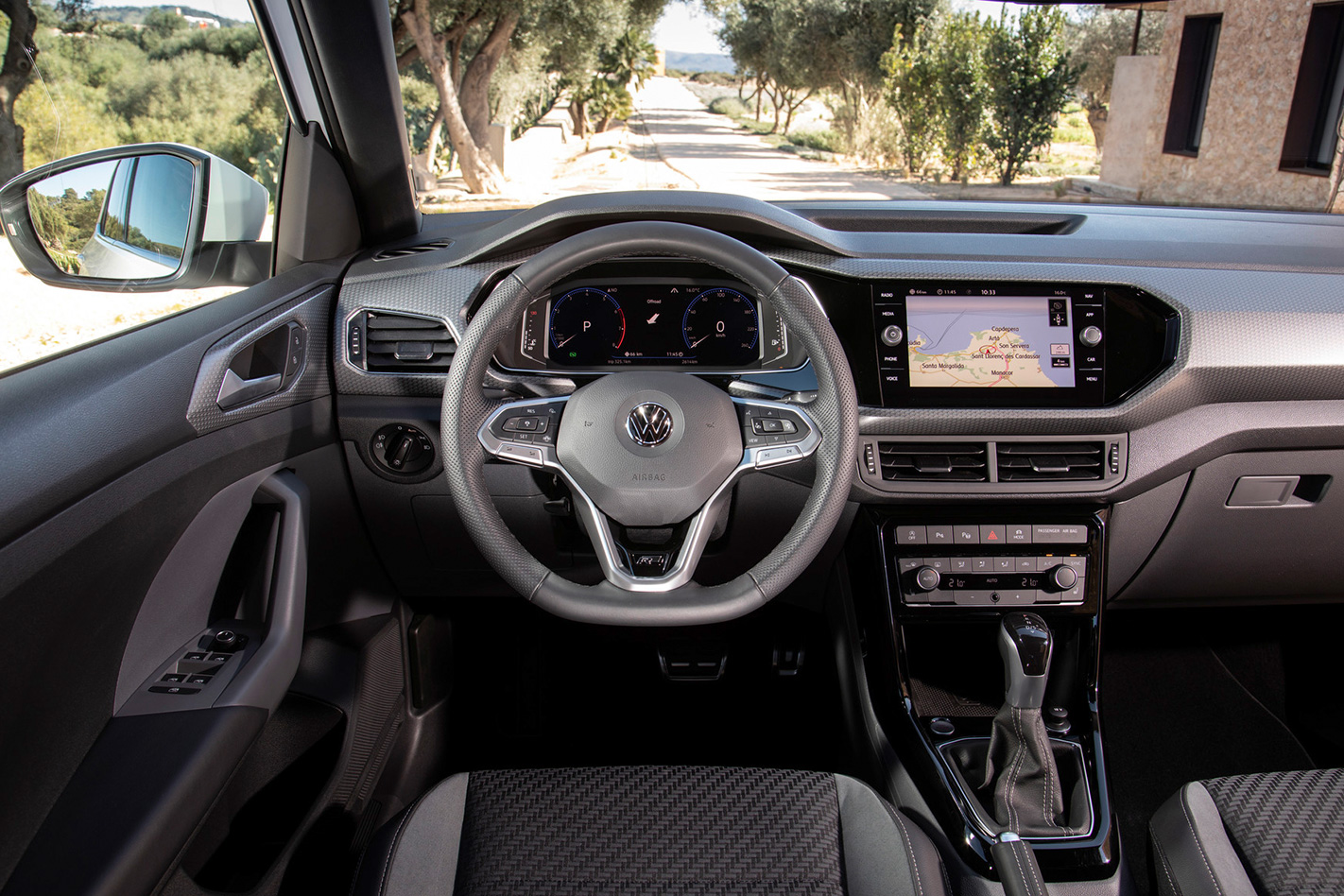
In Europe some T-Cross models come with traditional analogue speed and tacho gauges, with higher spec models getting a high-quality digital display that can also incorporate satnav instructions, media settings and more. We’d expect a similar treatment across the two Australian models once they’re announced, and no doubt VW will reserve other niceties fitted to our test car – such as satellite navigation and dual-zone climate control – for the higher-priced of the two T-Cross variants. It’s likely Bluetooth connectivity, DAB and a phone-charging mat will all be standard on both variants.
As for the sound system, the sound quality from the T-Cross’s speakers was plenty fine for the average user, although audiophiles will find its range lacking. We’re sure there will be an audio upgrade package on the Australian options list too.
Externally, the T-Cross is between the Golf and Polo for length and width, and is 100mm higher overall, some of which manifests as extra headroom inside and some as ground clearance underneath – not for offroading but to make it easier to get in and out of, and to see over traffic. Although on that last point, please remember this is still a small car, so you’re still a long way from king of the road!
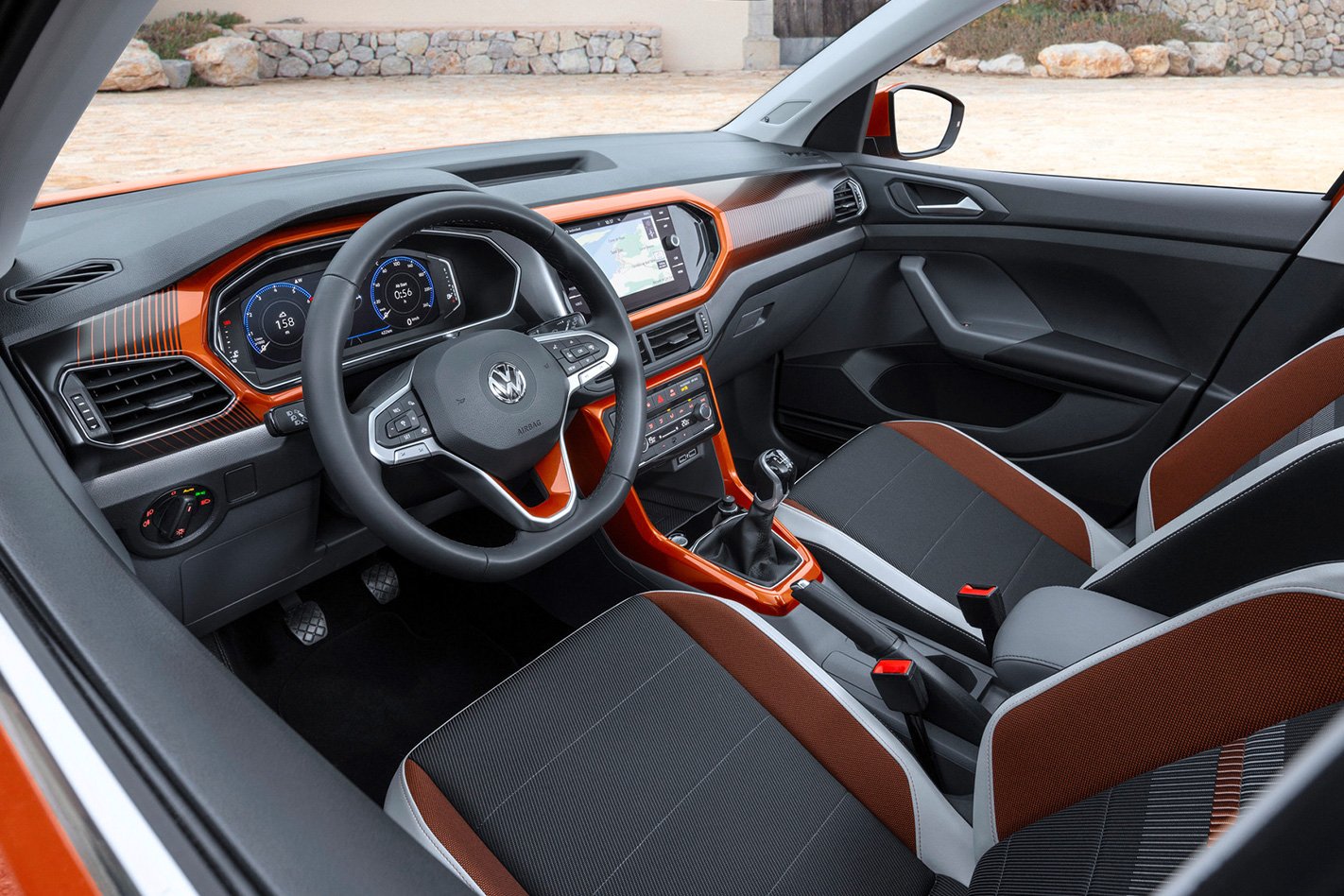
The driving position is fantastic; there’s plenty of seat height adjustment, and the steering wheel tilts and telescopes. Headroom up front is in plentiful supply. Same in the second row which is capable of accommodating anybody up to 6ft 4in without their head hitting the roof.
Legroom in the rear is also more than adequate for human beanpoles, too. The rear seatbench is capable of sliding forward up to 140mm to liberate more boot space, but this obviously impacts rear legroom considerably. Still, the flexibility offered by this – standard on all European models, so will probably be standard in Australia too – adds to the T-Cross’s impressive versatility.
Back seat passengers do miss out on air conditioning vents, so they’re reliant on the mid-mounted front vents for airflow. There are generous pockets on all four doors which can take a 1-litre water bottle and more.
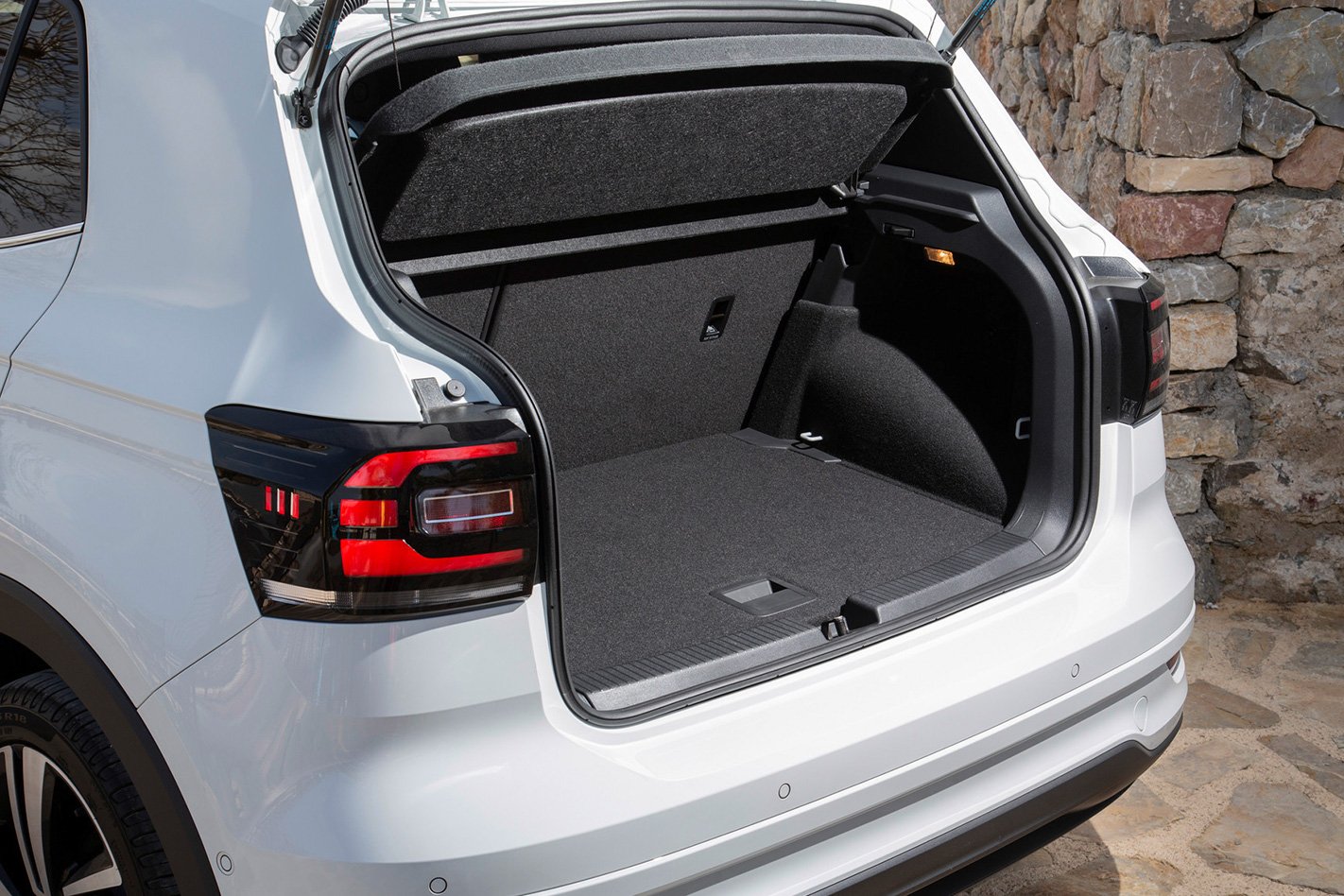
The boot is another T-Cross advantage over the VW Golf. It has 455 litres of storage space with the back seats up, expanding to 1281 litres when they’re both folded flat. They also fold individually in a 60/40 split.
For new families, the T-Cross has Isofix mounting points on the two outboard back seats, and the front passenger seat as well.
Safety-wise, UK-spec right-hand drive VW T-Cross models have been rated a five-star car by EuroNCAP, so we’d expect that classification to be adopted by Australian NCAP too. It did extremely well for adult (97 percent) and infant (86 percent) protection despite not having a knee airbag or chest protection in the rear. Its combination of active and passive safety features scored 81 percent for vulnerable road users (such as pedestrians), while standard AEB, speed control and lane assist systems scored it a ‘good’ rating of (80 percent) in active safety.
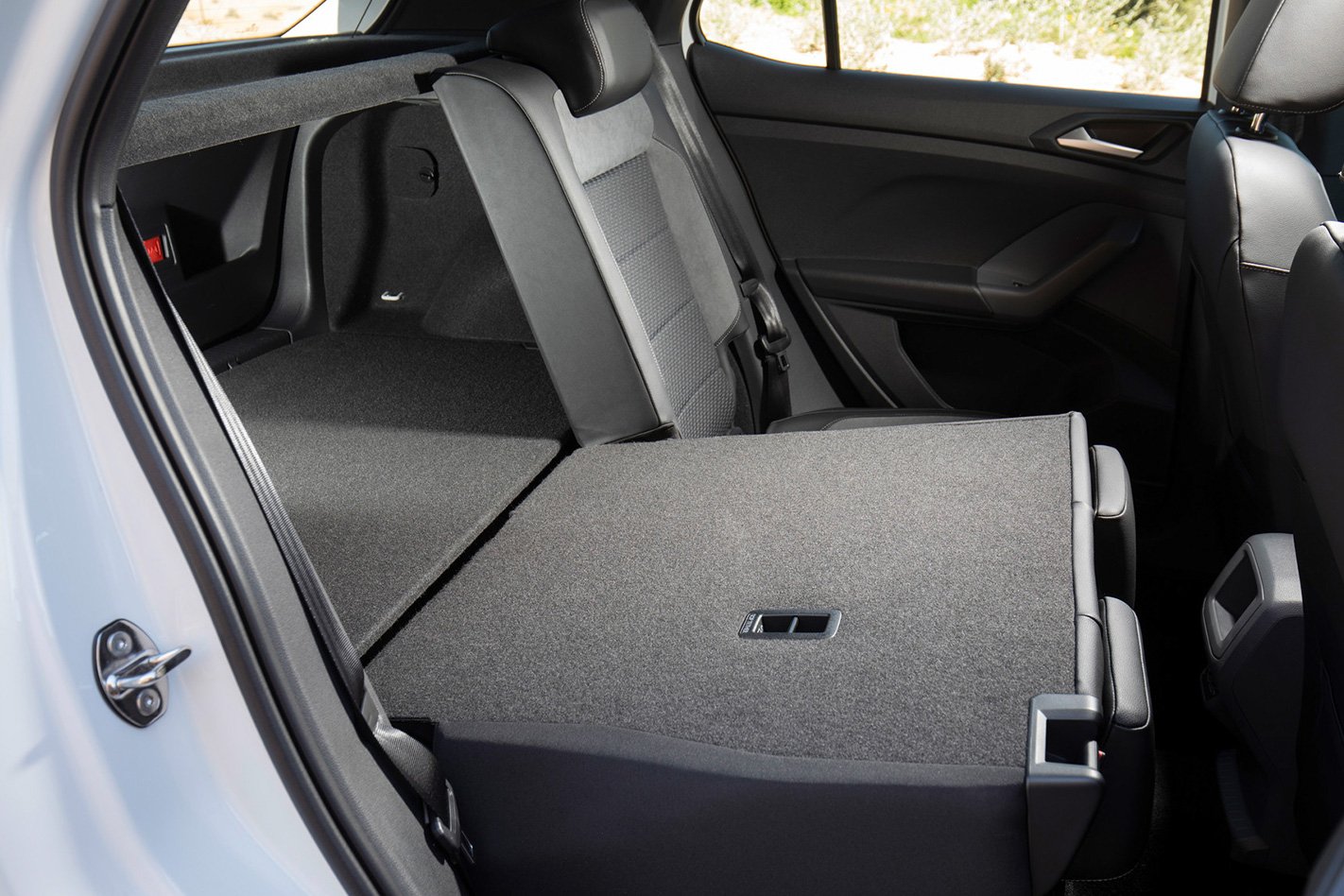
Is the VW T-Cross worth the money?
Hard to know for sure until we see Australian spec and pricing sometime in January 2020 ahead of the car’s March arrival. Two things are certain: the VW T-Cross does everything you’d expect of a compact crossover, and; it does so with typical Volkswagen aplomb. So, assuming Volkswagen can put a competitive sub $30K price on the T-Cross, it’s likely to find plenty of willing buyers who will in turn become happy customers.
Pros: Familiar interior and driving style; flexible interior; easy on the juice Cons: Not as funky looking as T-Roc; no rear vents in test model
Rating: 4/5



